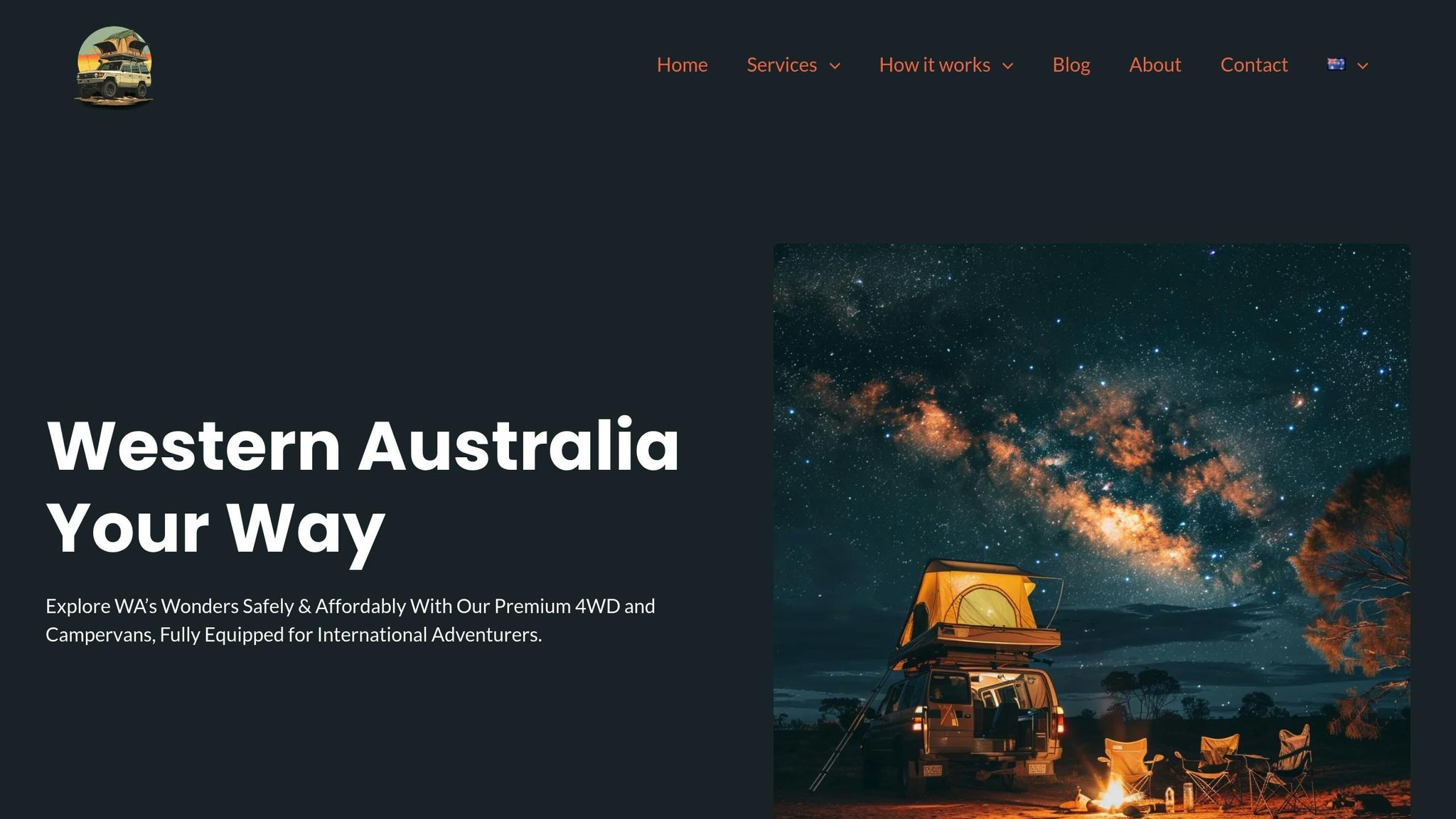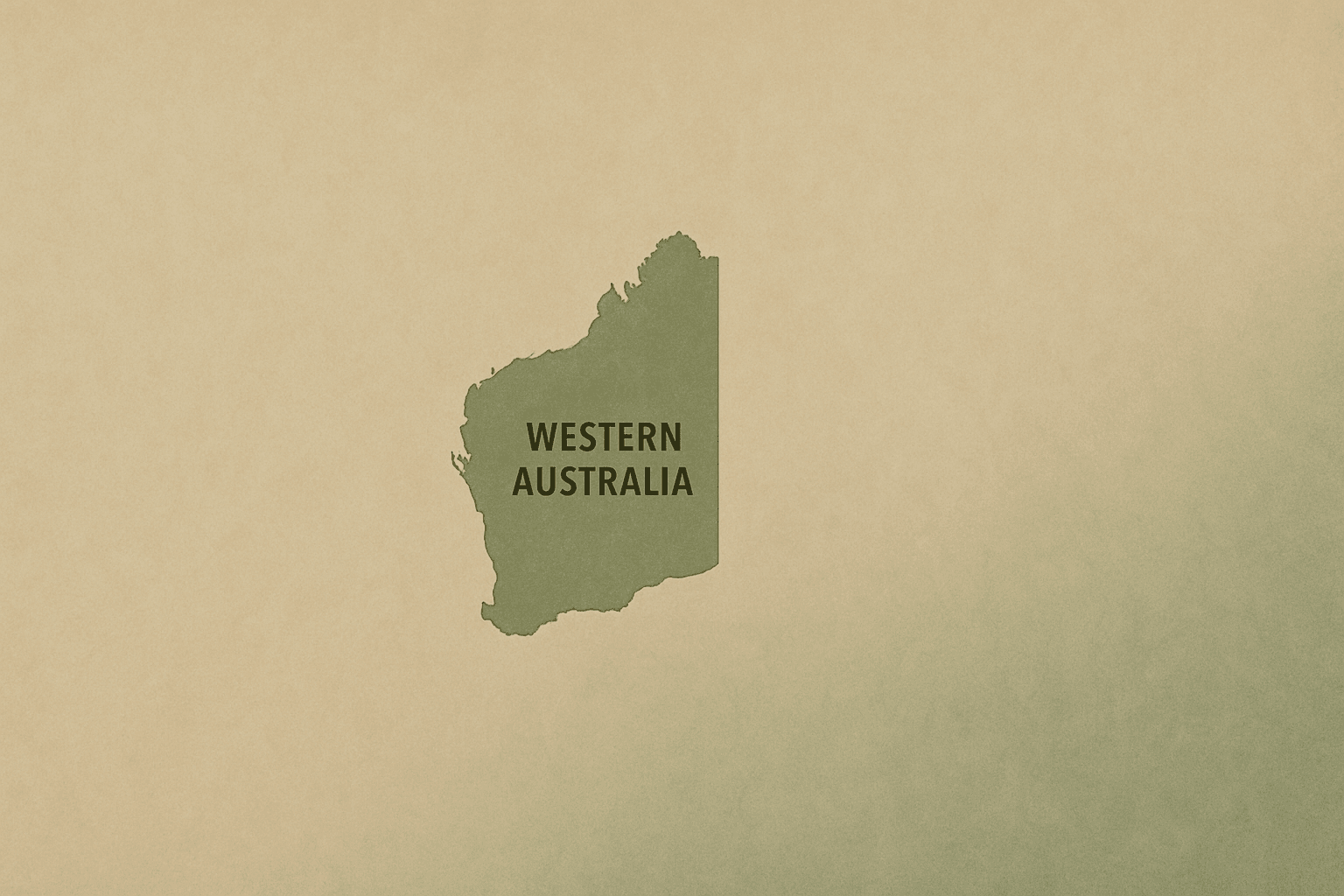Last Updated on October 4, 2025
So, you’re thinking about tackling one of Western Australia’s most beautiful coastal walks?
As someone who grew up exploring every nook and cranny of this coastline, the Cape to Cape Track holds a special place in my heart. It’s more than just a walk; it’s a 123-kilometre string of stunning views, quiet forests, and historic landmarks between the Cape Naturaliste and Cape Leeuwin lighthouses.
I’ve learned from experience that a little planning goes a long way. The great news is this track is perfect for first-timers, with clear signs and gentle slopes, and you’ve got plenty of options for where to rest your head at night.
Here’s a quick rundown of what you need to know:
- Best Time to Hike: I always recommend Spring (September-November) for the incredible wildflowers and whale watching or Autumn (March-May) for perfect, mild weather.
- What to Pack: Good navigation tools, a solid safety kit, plenty of water and food, and your essential camping gear are non-negotiable.
- Track Highlights: You’ll get to see two historic lighthouses, the powerful Redgate Beach memorial, and incredible limestone cliffs.
- Stay Your Way: You can pitch a tent at designated campsites, find a comfy bed in a local town, or get the best of both worlds with a campervan from a company like OffGrid Campers WA for total freedom.
Let’s walk through the details together. I’ll share some of my personal tips to help you get ready for this incredible trip.
HOW TO HIKE THE CAPE TO CAPE TRACK | Complete …
Trail Preparation
Getting ready for the Cape to Cape Track is about more than just packing a bag. A bit of prep for your body and your gear will make all the difference on the trail.
Physical Training Tips
You don’t need to be a super athlete for this hike, but building your endurance is key. The track is considered moderate, with the main challenges being the overall length and long stretches of soft sand.
My advice is to start training about four to six weeks before your trip. Try to mix in different types of activities to get your body ready.
- Varied Terrain Walks: Get off the pavement! Practice walking on sand, gravel paths, and uneven trails to build ankle strength.
- Back-to-Back Hikes: As you get closer to your trip, try doing two longer walks on consecutive days. This really helps simulate the feeling of a multi-day hike.
- Strength Exercises: Simple exercises like squats, lunges, and core work will give you the leg and back strength needed, especially if you’re carrying a full pack.
What to Pack
Packing light is a skill, but you never want to be caught without the essentials. Having spent plenty of nights out here, I’ve learned what truly matters.
Here’s a breakdown of what I recommend packing.
| Category | Items |
|---|---|
| Navigation | A physical map from Friends of the Cape to Cape Track, a compass, and a GPS app on your phone. Many hikers use the official Cape to Cape Track App ($27) or the FarOut App ($9). |
| Safety | A good first-aid kit, an emergency beacon (PLB), and a specific snake bite kit are crucial. |
| Clothing | Layers are your best friend. Pack moisture-wicking shirts, a fleece, a waterproof rain jacket, a sun hat, and sturdy, broken-in hiking boots. Gaiters are also a great idea to keep sand out of your boots. |
| Water & Food | Carry at least 2-3 litres of water. While campsites have rainwater tanks, they can run dry in summer, so a water filter or purification tablets like Katadyn Micropur Forte are essential. Pack high-energy snacks and lightweight meals. |
| Camping | A lightweight tent (like a Sea to Summit Specialist Duo), a warm sleeping bag, and a comfortable sleeping mat are my go-tos. |
| Electronics | A reliable head torch with spare batteries, a power bank for your phone, and the phone itself. |
Trail Safety
The track is well-travelled, but you’re still in nature. Always check the weather forecast before you set out and visit the Parks and Wildlife Service website for any park alerts, like prescribed burns or track diversions.
Mobile reception is patchy at best, so don’t rely on it. This is why carrying a Personal Locator Beacon (PLB) is so important; it can be a genuine lifesaver in an emergency.
A key tip from experienced hikers is to start your days early. This gives you plenty of daylight, helps you avoid walking in the peak heat, and lets you take your time enjoying the views.
Main Trail Features
This track isn’t just a walk; it’s a passage through time and nature. You’re walking on Wadandi Boodja (Saltwater People’s Country), land that has been cared for by the Wadandi people for tens of thousands of years. Many of the paths you follow are likely the same ones used for millennia.
Historic Sites
The track is bookended by two incredible lighthouses. At the north, the Cape Naturaliste Lighthouse offers guided tours where you can climb the 59 steps for amazing views. To the south stands the mighty Cape Leeuwin Lighthouse, marking the point where the Indian and Southern Oceans meet.
Along the way, you’ll pass the Redgate Beach memorial. It’s a powerful spot that honours the victims of the SS Georgette shipwreck from 1876, where local heroes Grace Bussell and Sam Isaacs made a courageous rescue.
These landmarks add such a rich layer of history to the natural beauty, making the whole experience feel deeper and more connected to the region’s past.
sbb-itb-3fe747d
Where to Stay
One of the best things about the Cape to Cape Track is how flexible you can be with accommodation. Whether you want to sleep under the stars or in a comfy bed, there’s an option for you.
Sleep Options
You have a few main choices for where to rest after a long day of walking.
- Free Hike-in Campsites: There are four basic campsites exclusively for walkers: Mount Duckworth, Moses Rock, Ellensbrook, and Deepdene. They have a toilet, picnic table, and a rainwater tank, but you’ll need your own tent. Walking the track is free, and so are these sites.
- Paid Campgrounds & Caravan Parks: For more facilities like showers, you can book a spot at private caravan parks in Yallingup, Gracetown, or Prevelly. National Park campgrounds like Contos Campground are another great option, though fees apply (around $15 per adult).
- Off-Track Accommodation: If camping isn’t your style, you can book accommodation in nearby towns and use a transfer service. Companies like Dunsborough Chauffeurs or South West Driving Service can drop you off and pick you up from the trail each day.
If you love the idea of having a mobile home base, you could rent an off-grid campervan. From my own adventures, I can tell you that companies like OffGrid Campers WA offer vans that are perfect for this. They come with solar power, batteries, and all your camping essentials. It’s a fantastic way to have a comfortable bed and a hot meal waiting for you near the trailhead.
Getting There
The track is about a three-hour drive south of Perth. Most people start at the northern end at Cape Naturaliste, which is about a 15-minute drive from Dunsborough. You can leave your car at the lighthouse, but it’s a good idea to let the visitor centre staff know your plans.
Getting between the start and end points requires some logistics. You can use a private transfer service, or catch a TransWA bus, which connects Dunsborough and Augusta. A little pre-planning here saves a lot of hassle later.
OffGrid Campers WA Services

Campervan Features
Using a campervan from OffGrid Campers WA as your basecamp seriously simplifies the logistics. From personal experience, having a comfortable setup to come back to after a 20km day on the trail feels like absolute luxury.
These vans are designed for exactly this kind of trip.
| Feature | Details |
|---|---|
| Power System | Solar panels and high-capacity lithium batteries keep everything running without needing a powered site. |
| Kitchen Setup | A fully equipped camp kitchen with a fridge means you can cook proper, nourishing meals. |
| Sleeping | You get a proper mattress and quality bedding, which is a huge upgrade from a sleeping mat. |
| Connectivity | Many vans come with the option of a Starlink internet system, perfect for checking weather updates or booking your next spot. |
| Storage | Large water tanks and plenty of space for your hiking packs and gear keep everything organised. |
| Safety | The vans include essential safety equipment and reliable navigation tools. |
Regional Travel Options
A campervan gives you incredible freedom to explore the Margaret River region beyond the trail.
- Base Camp Strategy: Set up at a central campground like Prevelly Caravan Park or Contos Campground. This lets you tackle different sections of the track each day without having to pack up all your gear.
- Rest Days: Use your rest days to explore the local wineries, breweries, or check out attractions like Jewel Cave near the southern end of the track.
- Flexible Access: Drive to various trailheads along the coast. This is ideal if you only want to walk specific highlights, like the stunning Boranup Karri Forest section or the dramatic cliffs near Wilyabrup.
These campervans are built to handle both sealed roads and the well-maintained unsealed roads that lead to many trail access points. You can pick up and drop off your vehicle in Perth, which makes it incredibly convenient to fit into your wider WA travel plans. OffGrid Campers WA can even give you some great route suggestions to make your trip even better.
Quick Tips and Summary
To wrap things up, here’s a quick summary to help you get ready for an amazing time on the Cape to Cape Track.
Main Points
As you get your gear together, keep these key things in mind:
- Map out your route, deciding whether you’ll camp, stay in towns, or use a campervan as a base.
- Pack smart with all the right camping essentials, navigation tools, and a reliable safety kit.
Tips for Success
A little insider knowledge can make your trip go from good to great.
- Plan for the Sand: About 30% of the track is on sand, which can be tiring. Good boots and gaiters are a must, and starting your beach sections early in the day when the sand is firmer can help.
- Book Ahead: During peak seasons (spring and autumn), paid accommodation and campsites can fill up quickly. It’s always a good idea to book in advance.
- Leave No Trace: This is a special place. Pack out everything you pack in, bury human waste properly, and stick to the marked trail to protect the fragile coastal environment.
Have an incredible time out there. It’s a walk you won’t forget.

